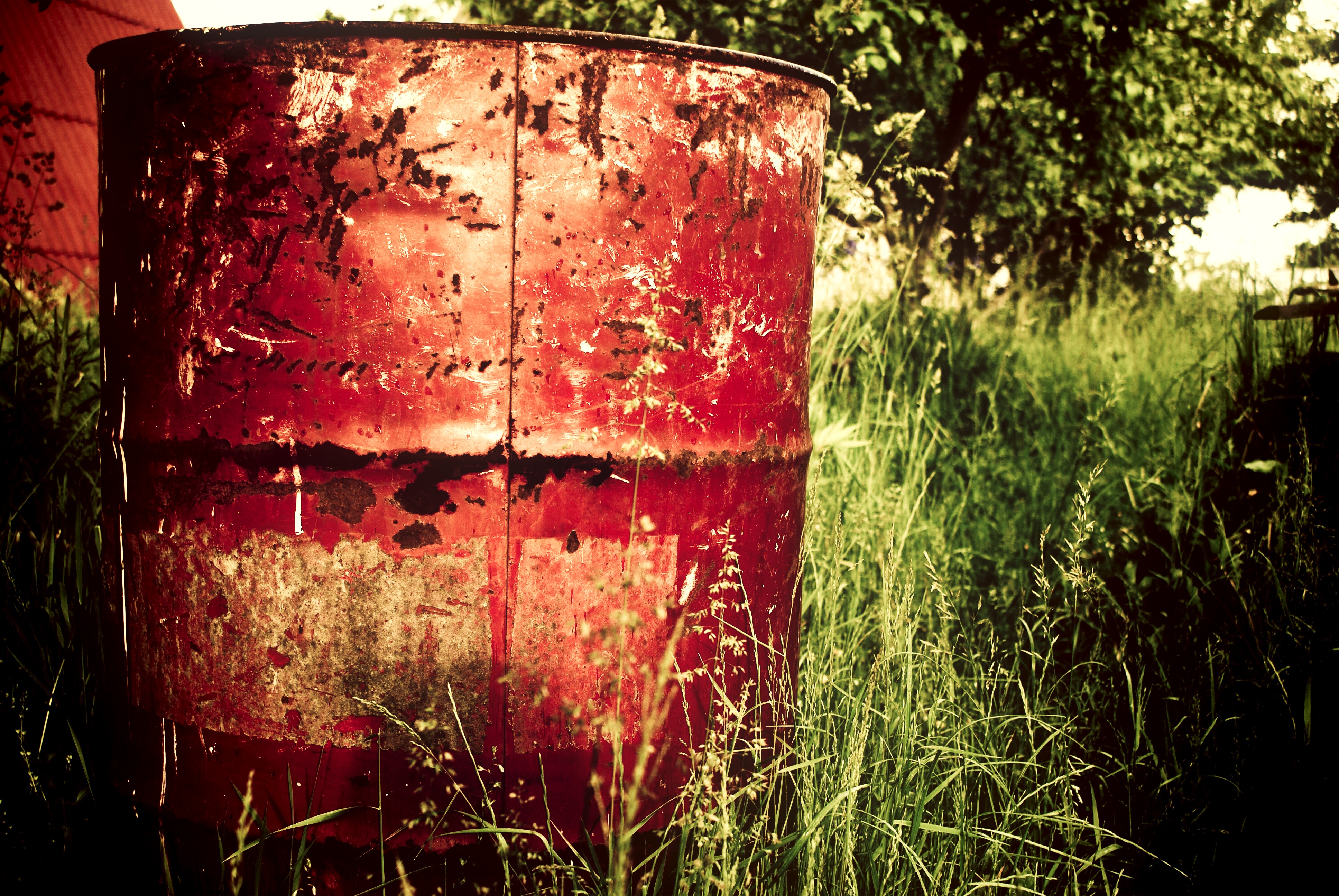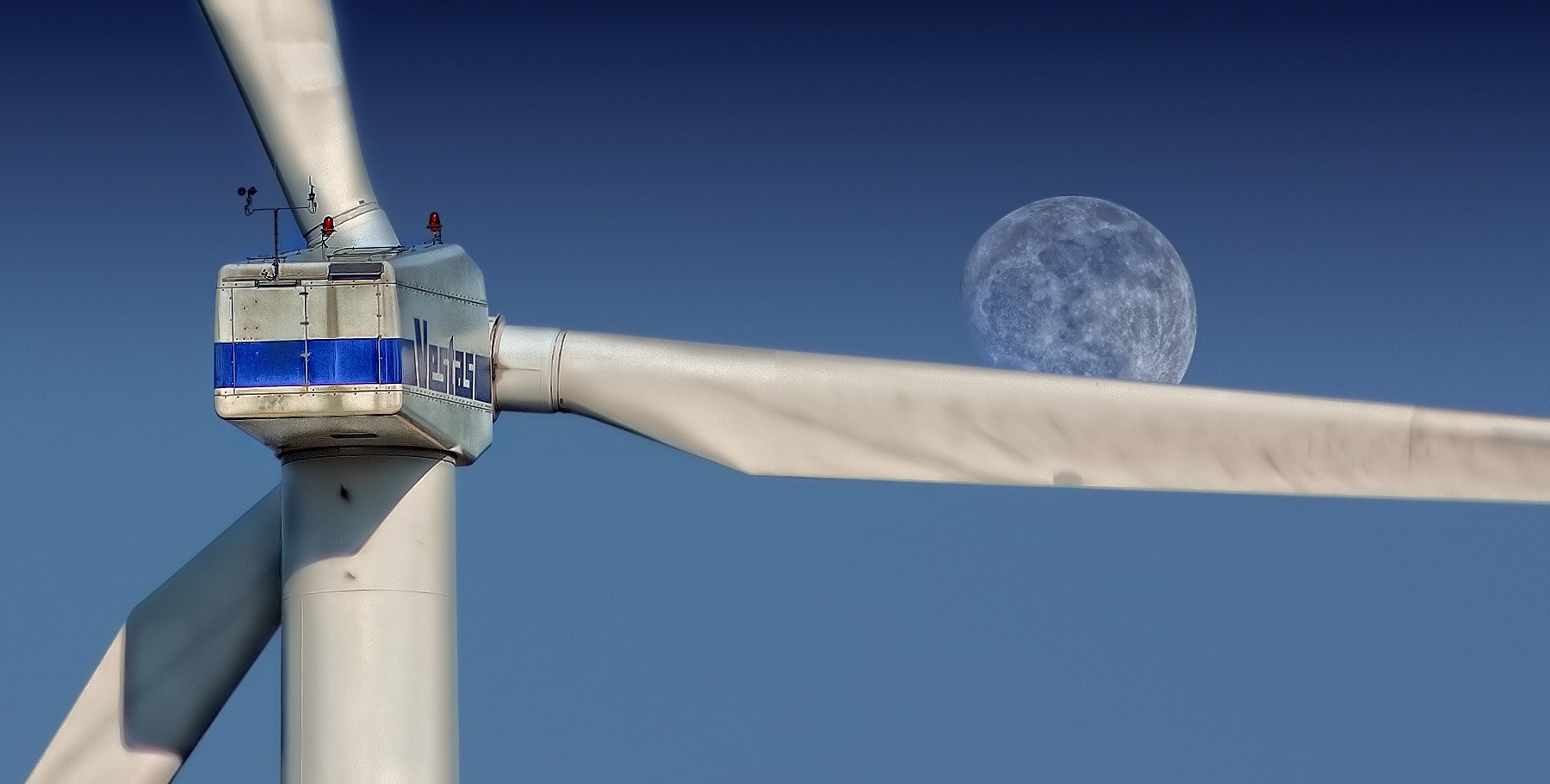Eric Anthony DeBellis*
Eric DeBellis is a 3L at Berkeley Law, where he is Senior Executive Editor of the Ecology Law Quarterly. This post is part of the Environmental Law Review Syndicate. Click here to see the original post and leave a comment.
On August 3, 2015, the EPA released its highly anticipated Clean Power Plan, establishing the nation’s first greenhouse gas emissions standards for existing power plants.[1] The Clean Power Plan (“the Rule”) also is the first of its kind in another sense: it employs a unique new regulatory framework that has drawn both praise and criticism. Here, I explain the legal controversy around the Rule and preview arguments both supporters and opponents are likely to raise in court.
Background
Traditionally, the EPA has regulated air pollutants from stationary sources through region-by-region air quality standards and source-by-source emissions permits.[2] The Clean Power Plan takes a broader approach. The EPA enacted the Rule under the Clean Air Act’s seldom-invoked section 111(d).[3] As section 111(d) prescribes, the EPA set an emissions reduction target in the Rule—cutting national power sector carbon emissions to 32 percent below 2005 (historical peak) levels by 2030—and identified the “best system of emission reduction” (BSER) that makes the target attainable. The EPA then established a target for each state[4] based on that state’s potential to reduce power sector emissions through three “building blocks:” improved efficiency at fossil fuel plants, increased utilization of existing low-emitting power sources, and development of new zero- and low-emitting power sources.[5] The greater the state’s potential to improve in any of these areas, the more ambitious its target. The EPA painstakingly detailed how it calculated each state’s target to be attainable and, according to the building blocks approach, fair.[6] However, the Rule leaves compliance plan specifics to the states.
Each state has broad discretion in determining how best to achieve its target. To reduce compliance costs, states may implement a wide array of tools, including traditional source-by-source command-and-control measures, interstate cap and trade, renewable portfolio standards, energy efficiency improvements, and an abundance of other options.[7] Once a state has determined which tools will best achieve its emissions target, that state must submit an implementation plan for EPA approval. The agency will devise its own plan for any state that refuses to do so itself. Supporters have praised the Rule’s flexibility for empowering states to devise innovative strategies to minimize compliance costs.[8] Opponents have questioned whether the Clean Air Act authorizes this unorthodox, broad-sweeping approach.[9]
Supporters: A Unique Challenge Calls for a Unique Solution
The Clean Power Plan’s supporters present the Rule’s unconventional aspects as necessary to properly address the realities of climate change.[10] Regulating greenhouse gas emissions to combat climate change presents several challenges that regulating traditional pollutants does not. Generally, the EPA regulates an air pollutant because it is toxic or otherwise harmful to ingest. The agency sets a limit on the concentration of each pollutant that may persist in any region’s air and tasks states with regulating individual major sources through emissions permits.[11] This regional air quality standards approach makes sense for toxic air pollutants because emissions distribution matters. Even if the nation as a whole has low emissions levels, if one city’s air quality is poor enough to pose a health hazard, the Clean Air Act obligates the EPA and states to devise a means to improve that city’s air quality.
But the EPA is not regulating greenhouse gases for toxicity. The EPA is regulating greenhouse gases because they contribute to climate change.[12] The greenhouse gases responsible for the bulk of climate impacts mix uniformly into the atmosphere regardless of origin.[13] As a consequence, the impacts of local greenhouse gas emissions contribute to climate change on a global scale.[14] To decrease the United States’ contribution to climate change, the nation must decrease its total emissions, regardless of where those emissions cuts happen.[15] In light of this distinction, the EPA eschewed the traditional regional air quality standards approach in favor of a national reduction target.[16] Unhindered by regional distribution considerations, the agency designed the Clean Power Plan to allow states to focus their emissions reduction efforts wherever is most cost-effective.[17]
The Clean Power Plan’s other major departure from the traditional air pollution control paradigm is its “beyond the fenceline” approach. Conventional power plant air pollution regulation imposes technological and operational requirements onsite (within the plant’s “fenceline”). Many means to reduce power sector greenhouse gas emissions, such as substation and transmission line improvements, energy efficiency, carbon taxation, and connecting more renewables to the grid, lie beyond the fenceline and often are more cost-effective than a strictly on-site approach.[18] To capitalize on these opportunities to further reduce emissions at lower costs, the Clean Power Plan credits states for emissions reductions achieved through offsite measures. Further, the EPA calculated state targets under the assumption that plant operators will employ the most cost-effective methods available, regardless of whether it requires them to act outside of a plant’s fenceline. Rule proponents justify this unorthodox approach as providing needed flexibility and facilitating innovation to minimize both emissions and costs.[19] Nevertheless, critics have raised concerns that the Rule’s unorthodox approach oversteps the limits of the agency’s authority under the Clean Air Act.[20]
Opponents: The EPA May Be Exceeding Its Jurisdiction Under the Clean Air Act
Two days after the EPA published the final Clean Power Plan, sixteen states filed for an administrative stay of the Rule. The states challenging the Rule characterized it as requiring states to “entirely reorder their energy economies” or face “a potential federal takeover of significant State authority.”[21] Furthermore, the EPA rarely invokes section 111(d), leaving the scope of the agency’s authority under the provision largely unsettled. The lack of precedent on section 111(d) makes projecting a legal challenge’s outcome difficult.
Seizing upon this uncertainty, Clean Power Plan opponents have questioned the Rule’s legality since its inception.[22] Despite the long-established administrative law principle that regulations cannot be challenged until an agency promulgates a final rule, fifteen states challenged the proposed Clean Power Plan upon its publication.[23] The courts promptly dismissed these cases as premature,[24] but these states’ eagerness to align against the Clean Power Plan demonstrates that the EPA is in for a long court battle.[25] The debate over the scope of the EPA’s authority is still developing, but certain legal objections that have arisen already seem likely to arise in court as well. Here, I focus on “beyond the fenceline” jurisdiction, dueling amendments, and broader federalism concerns.
First, opponents likely will challenge the EPA’s beyond the fenceline jurisdiction.[26] The EPA calculated state targets under the assumption that it had the authority to require states to implement emission reduction strategies that go beyond on-site modifications to power plants themselves. Though the agency maintains that states can attain their targets without requiring any actions outside the energy sector’s control, the courts likely will have to decide whether BSER may include beyond the fenceline measures.[27] The EPA dropped energy efficiency—the fourth building block in the proposed rule—from the final rule in response to these jurisdictional concerns.[28] In the proposed rule, the EPA considered each state’s potential to reduce emissions via energy efficiency measures, like insulation and energy-saving appliances, with little if any nexus to power plants themselves in setting state targets.[29] By excluding the energy efficient building block from its calculations, the EPA not only adjusted some states’ targets but also made the Clean Power Plan less susceptible to a jurisdictional challenge.[30] However, even after this adjustment, the scope of the EPA’s beyond the fenceline jurisdiction remains an open question.
Second, challengers likely will highlight a drafting error by Congress when it passed section 111(d) to question whether the EPA may regulate greenhouse gas emission from power plants under the provision at all.[31] The Clean Air Act’s authors included section 111(d) as a catchall provision to cover pollution that did not fit neatly into the Act’s other categories,[32] but the Senate and the House of Representatives each passed its own version of the section. Accordingly, both versions contain language intended to prevent redundant application of 111(d) and another Clean Air Act provision to the same emissions. Due to an oversight by the members of both houses, Congress never reconciled the two versions.[33] The House version makes 111(d) inapplicable to any emission source already subject to regulation under section 112.[34] The EPA already regulates power plants under rule 112, and so does the Clean Power Plan.[35] Thus, the House language would invalidate the Clean Power Plan outright.[36] The Senate version bars the EPA from regulating the same pollutant from the same source under two rules.[37] The EPA never has regulated greenhouse gases from existing power plants before, so the Senate version would allow the Clean Power Plan.[38] Naturally, the EPA follows the Senate language.[39] The agency maintains that its choice of the Senate version is a reasonable resolution of a genuine legal ambiguity,[40] which rule proponents argue entitles the EPA’s choice to judicial deference under the Chevron doctrine.[41] Opponents argue that a legislative drafting error does not give the EPA the authority to ignore the version it disfavors.[42]
Third, opponents likely will invoke constitutional federalism concerns.[43] Critics have emphasized one core principle in particular: the anti-commandeering doctrine.[44] According to the anti-commandeering doctrine, the federal regulation may not so coerce state agencies as to reduce them to mere extensions of the federal government.[45] Rule opponents argue that the Clean Power Plan runs afoul of the anti-commandeering principle by imposing a federal mandate to abandon certain energy sources (i.e., fossil fuels) in favor of other fuels (i.e., renewables).[46]
One potential counterargument would be that regulating any air pollutant under the Clean Air Act necessarily nudges the scales against energy generation methods that heavily emit the pollutant. Burning fossil fuels produces far more greenhouse gas emissions than generation from renewable fuels like solar and wind, so the EPA cannot limit greenhouse gas emission without putting fossil fuels at a competitive disadvantage. The states challenging the Clean Power Plan likely will argue that the EPA crossed the line by effectively ordering states to phase out fossil fuel generation, particularly from coal, in favor of lower-emitting power sources. In response, the EPA likely will maintain that the Clean Power Plan respects the anti-commandeering principles by leaving compliance specifics to states.
Conclusion
The Clean Power Plan is as ambitious as it is unique, and the legal challenges to the Rule raise many unsettled questions. The looming court battle over the Clean Power Plan will have tremendous implications for U.S. climate change policy as well as broader matters of federal agency jurisdiction. The legal community has been discussing the Clean Power Plan for over a year now, and it appears that the conversation will continue for years to come. The impending litigation should prove fascinating and will culminate in the most highly anticipated ruling on environmental law in recent memory. Clean Power Plan proponents and detractors alike eagerly await the outcome.
* Senior Executive Editor for Ecology Law Quarterly. Berkeley Law School, J.D. expected 2016.
[1] Press Release, White House, Fact Sheet: President Obama to Announce Historic Carbon Pollution Standards for Power Plants (Aug. 3, 2015), https://www.whitehouse.gov/the-press-office/2015/08/03/fact-sheet-president-obama-announce-historic-carbon-pollution-standards. For the full text of the final rule, see Carbon Pollution Emission Guidelines for Existing Stationary Sources; Electric Utility Generating Units, 80 Fed. Reg. 64,662 (Oct. 23, 2015) (to be codified at 40 C.F.R. pt. 60).
[2] See generally Justin E. McCarthy, Cong. Research Serv., RL30853, Clean Air Act: A Summary of the Act and Its Major Requirements (2005), http://fpc.state.gov/documents/organization/47810.pdf (surveying EPA regulation under the Clean Air Act and thereby predominantly describing regional air quality standards and source-specific emissions permits).
[3] For the exact language of Clean Air Act section 111(d), see 42 U.S.C. § 4711(d) (2012).
[4] For a map listing state targets, see Ctr. for Climate & Energy Solutions, Final State Rate-Based Targets (2015), http://www.c2es.org/federal/executive/epa/carbon-pollution-standards-map.
[5] Final Clean Power Plan vs. Draft Plan: What Has Changed?, Envtl. & Energy Study Inst. (Aug. 21, 2015), http://www.eesi.org/articles/view/final-clean-power-plan-vs-draft-plan-what-has-changed.
[6] See Carbon Pollution Emission Guidelines for Existing Stationary Sources: Electric Utility Generating Units, 80 Fed. Reg. 64,662, 64,820–26 (Oct. 23, 2015) (explaining the EPA’s methodology for calculating State targets).
[7] See, e.g., Nat’l Ass’n of Clean Air Agencies, Implementing EPA’s Clean Power Plan: A Menu of Options (2015) (explaining in detail a variety of potential compliance strategies available to States).
[8] E.g., Nat. Res. Def. Council, Understanding the EPA’s Clean Power Plan 1 (2015), http://www.nrdc.org/climate/files/cpp-national-compliance-IB.pdf; Robert Sussman, Obama’s Final Clean Power Plan: Merging Strong Climate Goals with Flexible Implementation, Brookings (Aug. 4, 2015, 4:00 PM), http://www.brookings.edu/blogs/planetpolicy/posts/2015/08/04-obama-clean-power-plan-sussman.
[9] E.g., Mitch McConnell, States Should Reject Obama Mandate for Clean-Power Regulations, Lexington Herald-Leader (Mar. 3, 2015), http://www.kentucky.com/2015/03/03/3725288/states-should-reject-obama-mandate.html; Press Release, Office of W.V. Attorney Gen., Attorney General Patrick Morrisey Denounces EPA’s Illegal, Over-Reaching Clean Power Plan (Aug. 3, 2015), http://www.ago.wv.gov/pressroom/2015/Pages/Attorney-General-Patrick-Morrisey-Denounces-EPA’s-Illegal,-Over-Reaching-Clean-Power-Plan.aspx; Laurence H. Tribe, The Clean Power Plan Is Unconstitutional, Wall St. J. (Dec. 22, 2014, 7:06 PM), http://www.wsj.com/articles/laurence-tribe-the-epas-clean-power-plan-is-unconstitutional-1419293203.
[10] E.g., Nat. Res. Def. Council, supra note 8; Sussman, supra note 8.
[11] See McCarthy, supra note 2, at CRS-3 to CRS-4 (explaining the national ambient air quality standards and state implementation plan provisions of the Clean Air Act).
[12] Endangerment and Cause or Contribute Findings for Greenhouse Gases Under Section 202(a) of the Clean Air Act, 74 Fed. Reg. 66,496, 66,497 (Dec. 15, 2009) (finding that greenhouse gases threatened human health and the environment, warranting regulation under the Clean Air Act, because of their contribution to climate change).
[13] Id. at 66,514.
[14] Regulating Greenhouse Gas Emissions Under the Clean Air Act, 73 Fed. Reg. 44,354, 44,367 (July 30, 2008).
[15] Id.
[16] Id. at 66,514–15.
[17] Carbon Pollution Emission Guidelines for Existing Stationary Source: Electric Utility Generating Units, 79 Fed. Reg. 34830, 34,832 (June 18, 2014).
[18] David Roberts, Obama’s Carbon Rule Hangs on This One Legal Question, Grist (Feb. 9, 2015), http://grist.org/climate-energy/obamas-carbon-rule-hangs-on-this-one-legal-question/.
[19] See, e.g., id.
[20] E.g., supra note 9.
[21] Application for Administrative Stay by the State of West Virginia and 15 Other States at 2, Carbon Pollution Emission Guidelines for Existing Stationary Sources: Electricity Generating Units; Final Rule, EPA Docket No. EPA-HQ-OAR-2013-0602 (Aug. 5, 2015), available at http://www.ago.wv.gov/Documents/WV%20-%20Administrative%20Request%20for%20Stay%20CPP.PDF.
[22] See, e.g., Carbon Pollution Emission Guidelines for Existing Stationary Sources: Electric Utility Generating Units, 80 Fed. Reg. 64,662, 64,760 n. 463 (Oct. 23, 2015).
[23] Neela Banerjee, 12 States Sue the EPA over Proposed Power Plant Regulations, L.A. Times (Aug. 4, 2014, 6:46 PM), http://www.latimes.com/business/la-fi-epa-lawsuit-20140805-story.html.
[24] Andrew Childers, Challenged to Proposed Clean Power Plan Are Premature, D.C. Circuit Says in Dismissal, Bloomberg BNA (June 10, 2015), http://www.bna.com/challenges-proposed-clean-n17179927524/.
[25] See Legal Challenges—Overview & Documents, E&E News, http://www.eenews.net/interactive/clean_power_plan/fact_sheets/legal (last updated Nov. 3, 2015) (predicting the D.C. Circuit will not rule on the merits until at least late 2016 and that an appeal to the Supreme Court likely will follow).
[26] Full disclosure: I disputed the fenceline distinction’s relevance in a piece I wrote for Ecology Law Quarterly’s annual review issue. Eric A. DeBellis, Note, In Defense of the Clean Power Plan: Why Greenhouse Gas Regulation Under Clean Air Act Section 111(d) Need Not, and Should Not, Stop at the Fenceline, 42 Ecology L.Q. 235 (2015).
[27] See Carbon Pollution Emission Guidelines for Existing Stationary Sources: Electric Utility Generating Units, 80 Fed. Reg. at 64,767 (the EPA’s response to commenters’ arguments that section 111(d) only authorizes the agency to require pollution control measures that are “integrated into the design or operations of the source itself.”).
[28] Id. at 64,673.
[29] Brian Palmer, Is Energy Efficiency Still a Part of the Clean Power Plan?, onEarth, http://www.onearth.org/earthwire/clean-power-plan-energy-efficiency (last visited Nov. 3, 2015).
[30] Id.
[31] The academic literature on the dueling amendments debate has been prolific and, at times, heated. See, e.g., Dan Farber, Dueling Laws and the Clean Power Plan, Legal Planet (Aug. 17, 2015) (characterizing the dueling amendments argument as industry “trying to make too big a case turn on too small a technicality”); Laurence Tribe, Professor Tribe’s Reply, Harv. L. Sch. Envtl. L. Program (Mar. 22, 2015), https://hlsenvironmentallaw.wordpress.com/professor-tribes-reply/ (rebutting Jody Freeman and Richard Lazarus by arguing that the Senate version was merely clerical in nature and Congress clearly intended to adopt the substance of the House’s version, which would not authorize the Clean Power Plan).
[32] Coral Davenport, Brothers Battle Climate Change on Two Fronts, N.Y. Times (May 10, 2014), http://www.nytimes.com/2014/05/11/us/brothers-work-different-angles-in-taking-on-climate-change.html.
[33] Jeremy P. Jacobs, Both Side Ready Arguments for Case that Could Scotch EPA Power Plants Rule, Greenwire.(Apr. 13, 2015), http://www.eenews.net/stories/1060016647.
[34] Clean Air Act Amendments of 1990, Pub. L. 101-549, § 302(a), 104 Stat. 2399, 2574 (1990).
[35] Tribe, supra note 31.
[36] Id.
[37] Clean Air Act Amendments of 1990, Pub. L. 101549, § 108(g), 104 Stat. 2399, 2467 (1990). The U.S. Code, 42 U.S.C. 7411(d) (2012), reflects the Senate language, but this is not dispositive. To quote the Supreme Court, “Though the appearance of a provision in the current edition of the United States Code is ‘pima facie’ evidence that the provision has the force of law, it is the Statutes at Large that provides the ‘legal evidence of laws.’” U.S. Nat’l Bank of Ore. v. Indep. Ins. Agents of Am., 508 U.S. 439, 448 (1993) (internal citations omitted). The Statutes at Large contains both versions, leaving the matter of which version controls open to debate.
[38] Farber, supra note 31.
[39] Carbon Pollution Emission Guidelines for Existing Stationary Sources: Electric Utility Generating Units; Final Rule, 80 Fed. Reg. 64,662, 64,715 (Oct. 23, 2015) (to be codified at 40 C.F.R. pt. 60).
[40] Id.
[41] E.g., David Doniger & Benjamin Longstreth, Grasping at Straws: Why a Legislative Glitch Will Not Exempt Power Plants from Carbon Standards, Nat. Res. Def. Council: Switchboard (Nov. 1, 2013), http://switchboard.nrdc.org/blogs/blongstreth/grasping_at_straws_why_a_legis.html.
[42] E.g., Tribe, supra note 31.
[43] See, e.g., Mario Loyola, Federal Coercion and the EPA’s Clean Power Plan, The Atlantic (May 17, 2015), http://www.theatlantic.com/politics/archive/2015/05/federal-coercion-and-the-epas-clean-power-plan/393389/ (arguing the Clean Power Plan unconstitutionally coerces States to abandon certain fuel sources in favor of others).
[44] See, e.g., Scott C. Ostdyk, A Constitutional Challenge to EPA’s “Clean Power Plan”, Law360 (Oct. 27, 2014, 2:42 PM), http://www.law360.com/articles/590762/a-constitutional-challenge-to-epa-s-clean-power-plan.
[45] Id.
[46] See, e.g., id.




